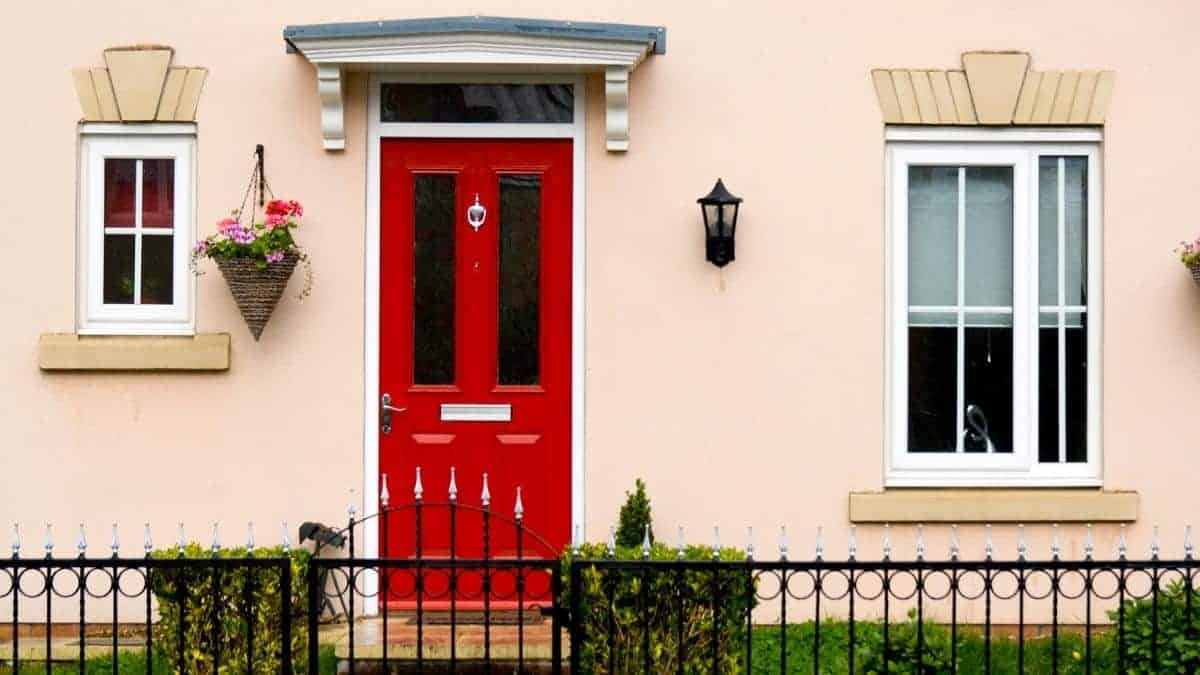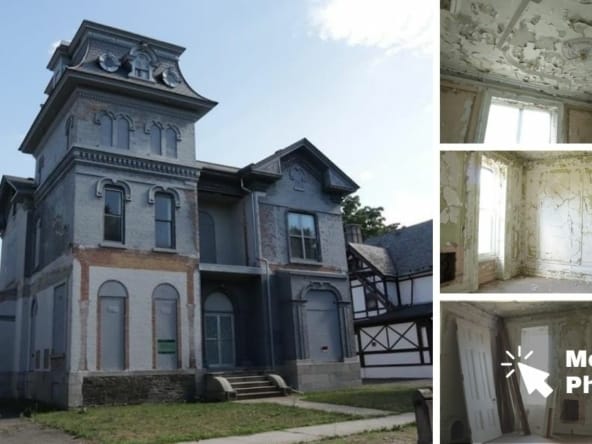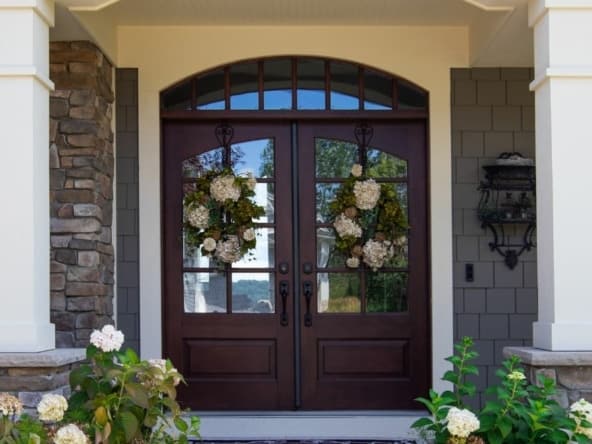Long ago, people would continuously stuff the fireplace with wood to keep themselves from freezing.
These same individuals had to open strategically placed windows during the summer to avoid heat stroke. HVAC systems did not exist yet.
Notwithstanding, human ingenuity existed, exemplified by the above-door window in older homes. Regulating the temperature was as simple as opening and closing these valuable windows.
What Are the Windows Above Doors Called?
“Transom windows” receive their name from horizontal beams that sit above doors. This architectural design provides structural support and partitions the door from the above window.
The window sits above the door’s transom – hence the name “transom window.” Transom windows may be called transom for short.
What Was the Purpose of a Transom Window?
In addition to regulating temperature, windows installed above doors allow light to penetrate the room.
This design was instrumental and standard in old, narrow-row houses. In this model, windows were only placed at the front and back of the house, leaving interior rooms dark.
Interior transom windows solved this problem by borrowing light that shined into the hallway, thereby lighting up the interior spaces.
Previous generations would install transom windows above an interior space and open them to allow heat to escape the room. In the wintertime, they would draw heat from the fireplace to the bedrooms via the transom.
In older homes, to increase air circulation, one would open exterior transom windows at either end of the house. Opening the interior transom windows on could circulate air into the stuffiest rooms in the home.
Much like in older homes, large legacy buildings and schools relied heavily on transom windows to promote cross-ventilation to keep interior offices and classrooms comfortable.
Transom Windows in Old Homes
In modern homes, you will generally find a transom window above exterior doors, like front doors and French patio doors. Whereas older homes usually have windows above the doors of interior rooms.
Many modern homeowners install transoms for visual appeal; therefore, manufacturers do not design them to open. There are exceptions to this norm.
To find out more research electrical systems for transoms. In contrast to the electrical system, older transom models relied on a manual rod system.
History of Transom Windows
You might be wondering how did the transom window come to be? Well, the origins of the transom are much older than old homes in America. The transom dates back around 700 years. We can spot these ancient transoms in the bell towers of gothic, ecclesiastical buildings.
The transom is a horizontal crossbar; the mullion is the vertical equivalent. The mullion is the transom’s predecessor and even hundreds of years older!
In England, centuries after gothic architecture first used transoms, the transom window style became an integral part of 18th-century Gregorian architecture and continued to be in vogue during the Victorian era.
The design was so successful that it permeated across the pond and into the new world. Not until the mid-to-late 20th, once central air conditioning units became mainstream, did transom windows fall out of favor.
Read More: Why Do Old Houses Have Small Rooms?
Transom Windows in Culture
Windows above doors were once so commonplace, so integral to everyday life that idioms exist about them. Now, I want you to imagine suffering an advertisement without your consent.
For the sake of example, an unwelcomed solicitor climbs over your six-foot-tall fence and slides his offer through the tiny gap under your front door. The idiom for this behavior type is “over the transom.”
In a particular sense, this phrase refers to publishing. A writer inconspicuously attempts to publish a periodical without any prior solicitation.
How does he do it? By slipping the manuscript, unnoticed, over the door and through the crack in the transom window.
Let’s say a secret agent delivered a private message without inviting any suspicion. Additionally, let us pretend that the person who received the confidential message was never authorized to receive it. In this scenario, the secret agent delivered the message “over the transom.”
In older homes, many transom windows are pretty small. This simple fact of life has been the inspiration for a folk idiom. Some attribute its origins to the actress Fanny Brice.
In her witty response to a question regarding how giving birth felt, she responded, “Like pushing a piano through a transom.”
Read More: Why Are Old Houses So Small?
How Transom Windows Work
Before modern AC units were in every home, an individual from that era would have often needed to change the temperature in the house or a specific room while keeping the door shut.
The reasons for needing the door shut could vary from privacy, security, or keeping bugs out. These same reasons exist for us today.
The transom window allowed air to flow into the house without having to compromise privacy and security.
One neat thing about transom windows is that while they are high off the ground, you would not need to grab a chair, carry it over, and then stand on it to open the window back in the day. The transom window had more impressive technology than you might have considered initially.
A long wand, called a rod or pole, would stretch from the window to a comfortable height. The ergonomics of this design enabled the operator to handle the transom pole without having to reach above his head to grab it.
The pole attaches to a bracket, and then the bracket is connected to the transom window sash. The sash is the part of the window that moves. Some designs have a mechanism that can lock the pole in place.
What Is a “Transom Light”?
If you remember this, you’ll never forget one of the primary purposes of a transom window: transom windows go by the alias transom light. Architects use this terminology because lights is another name for windows.
The purpose of a transom window, or should we say a transom light, is to bring more natural light into the house. The term “transom window” is the proper word in the U.S. for a transom light.
Further Reading: Why Are Old Houses So Dark?
Are Transoms Outdated?
The once popular transom window had all but fizzled out by the 1980s. However, the story doesn’t end there. People’s general appreciation for natural light, and perhaps the Victorian aesthetic too, has sparked a strong resurgence of transom windows in modern architecture.




